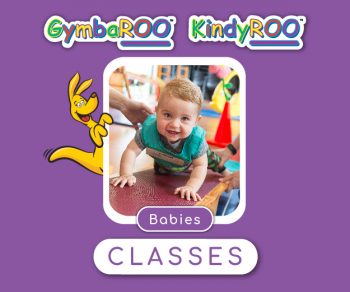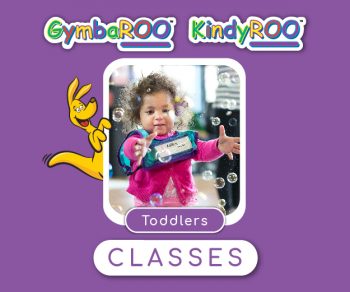Dr Tessa Grigg (PhD)
Parents do the very best they can with the information and resources that they have to raise healthy happy children. With increased education and information there is a higher chance that the outcomes can be improved. GymbaROO-KindyROO has a strong focus on providing education for parents as well as the best movement opportunities for children, both based on current research. This article highlights some interesting research from Italy and the USA that assesses the nurturing of young brains through movement, music and nutrition. It would appear there are strong links, and at the core is the important partnership between what is offered at GymbaROO-KindyROO and what parents provide at home.
Experiences appear to be the basis of brain development 1 and this is why we encourage parents to provide a wide range of experience for their child’s developing brain. But are some aspects more important than others and if you are needing to make choices, as a busy parent, where is it best to focus your attention? We know now that the physical structure of the brain changes throughout our lives as a result of our experiences and the environment we live in 2 and that a stimulating environment creates a brain with more connections. However an overview of published research relating to nurturing the brain found strong links between physical activity, nutrition and music3. These three aspects of our daily lives are described as inexpensive and readily available to large portions of the population.
How does physical activity nurture the brain?
Miscuraca et al. (2017) found multiple studies showing that exercise improves brain function, in particular memory and learning. Physical fitness was correlated with academic achievement, the more physically active children were the higher their academic achievement. They found multiple studies where obesity (implied inactivity) was associated with lowered academic results and these results were also reported with adolescents: higher academic scores were associated with higher levels of physical activity. In fact they found that brain decline in later years was reduced when physical activity levels were higher. The take home message from all these studies is that when we move, our brain functions better. We all need to move!
How does nutrition nurture the brain?
The quality of nutrition has also been shown to play a crucial role in the development of the brain 3. Omega-3 fatty acids and folic acid are highlighted as being associated with increased brain function during the years of brain development. Whole food was noted to be rich in many of the nutrients required by the brain, particularly unprocessed fish, fruit and vegetables. Keep it simple and clean seems to be the clear message here and eat a wide variety of food. Tell that to your fussy toddler!!
How does music nurture the brain?
Listening to, practicing and participating in musical activities has reportedly been shown to have a positive effect on the brain 3. Brain size was larger and brain activation was shown to be greater in musicians when compared with non-musicians. Even listening to music has been shown to activate multiple areas of the brain and this may be the reason for increased functionality. However, it appeared that background music when performing cognitive tasks had a detrimental effect on brain function. Actively listening to music or being engaged with music in some form seemed to have the greatest effect on the brain. Music is an important aspect of a child’s life and it would appear that it is an important part when considering activities that nurture the brain, particularly in the developing years.
The title of the article refers to a parent partnership. At GymbaROO-KindyROO we provide ‘top-shelf’ physical activity for young children based on their developmental needs. We provide a range of interesting musical activities and encouragement to engage in these activities. We need parents to attend to the nutrition and we provide some information in this area. Together we aim to set up life-long patterns that will keep the brains of children nurtured and healthy. It is a team effort. So, factor in a dance-a-day if you can, and get those bodies moving.
- Guyer AE, Pérez‐Edgar K, Crone EA. Opportunities for neurodevelopmental plasticity from infancy through early adulthood. Child Development. 2018;89(3):687-97.
- Kramer AF, I EK. Capitalizing on cortical plasticity: Influence of physical activity on cognition and brain function. Trends in Cognitive Sciences. 2007;11:342 – 8.
- Misuraca R, Miceli S, Teuscher U. Three effective ways to nurture our brain: Physical activity, healthy nutrition, and music: A review. European Psychologist. 2017;22(2):101–20.
To view on YouTube:
You may also like to read:









